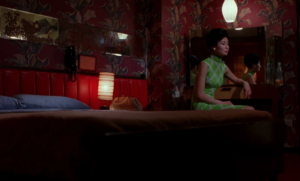
written by RACHEL HANLY (edited by KATERINA THEOCHAROUS)
The catacombs of Paris have been a source of morbid fascination for centuries. From Victor Hugo’s Les Misérables to Gaston Leroux’s Phantom of the Opera, the sinister past and mysterious events surrounding these tunnels of the dead have inspired the adventurous and creative alike for as long as they have existed. But to understand why they are so captivating, it is important to understand the history behind them, and how they are so intertwined with not only French culture but human nature as a whole.
By the 18th century, Paris had become the second largest city in Europe, with a flourishing population of over half a million. It also boasted scientific and artistic innovation, early public transport, and street lighting. It had made a name for itself as a modern hub of theatre and architecture, while simultaneously becoming a place of philosophy, dissent and eventually revolution.
Of course, none of this came without a price. By this time, the cemeteries of the city were overflowing, with the oldest and largest, Les Innocents, soon becoming a mass grave. The Church was strong enough at this time that the cemeteries were not disturbed, causing neighbourhoods nearby to suffer the smell of rotting flesh. In 1780, however, a structural collapse in Les Innocents resulted in the spilling of decomposing corpses into these neighbourhoods. It was evident that something had to be done.
Over a period of 12 years, starting around the time of the French Revolution, the contents of Les Innocents were slowly moved to the limestone mines beneath the city. Somewhat disturbingly, the exhumed bones were organised into neat, artistic walls complete with monumental tablets and decorations, one room even dedicated to the display of various skull abnormalities found during the renovation. Famous radical figures of the Revolution, such as Maximilien Robespierre and Jean-Paul Marat, are buried in this historic place.
The limestone mines of the catacombs were dug as early as the 13th century, and their history has continued to evolve even after they were filled with remains. In WWII, the tunnels were used as passages and hiding places for both the French and the Germans, to both escape the other side and plan upcoming attacks. The Nazis even built bunkers under the city, the vestiges of which still existing today.
That’s not all, though – much is yet to be explored of the tunnels, which are estimated to be 320 km long, and the undiscovered territory is rumoured to house secret unnamed societies. In 2004, police stumbled into an isolated section of the tunnels while undergoing a training exercise. Here they discovered a vast cinema room, complete with a restaurant and bar, phone lines and hidden cameras. Upon their return a few days later, they found the electricity lines cut with a note in the centre of the room that said only, “Do not try to find us.” There are countless theories regarding the activities and connections of the mysterious group, but nothing solid as of yet. Spooky.
Today, the catacombs are a popular tourist destination and somewhat of a burden on local police- communities of explorers (nicknamed ‘cataphiles’) love to break into undiscovered parts of the tunnels and hold gatherings and parties, or even swim in secluded pools of water unknown to the public. In 2017, a group of thieves conducted a heist which included breaking into an underground cellar through the tunnels and stealing over a quarter of a million pounds’ worth of wine.
So why is it that we are so obsessed with something so macabre? Inexperienced adventurers have been rumoured to go missing in parts of the catacombs, never to be found again – what draws people into their depths? I think it’s similar to standing at the top of a cliff and looking at the sea below, so vast yet strangely alluring. It’s something that can’t really be explained.












































































































